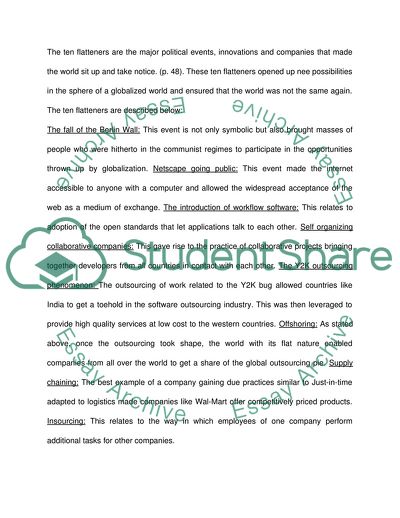Cite this document
(Book Review of The World is Flat: a brief history of the 21st century Report/, n.d.)
Book Review of The World is Flat: a brief history of the 21st century Report/. https://studentshare.org/literature/1716845-book-review-of-the-world-is-flat-a-brief-history-of-the-21st-century-by-thomas-l-friedman-book-review
Book Review of The World is Flat: a brief history of the 21st century Report/. https://studentshare.org/literature/1716845-book-review-of-the-world-is-flat-a-brief-history-of-the-21st-century-by-thomas-l-friedman-book-review
(Book Review of The World Is Flat: A Brief History of the 21st Century Report/)
Book Review of The World Is Flat: A Brief History of the 21st Century Report/. https://studentshare.org/literature/1716845-book-review-of-the-world-is-flat-a-brief-history-of-the-21st-century-by-thomas-l-friedman-book-review.
Book Review of The World Is Flat: A Brief History of the 21st Century Report/. https://studentshare.org/literature/1716845-book-review-of-the-world-is-flat-a-brief-history-of-the-21st-century-by-thomas-l-friedman-book-review.
“Book Review of The World Is Flat: A Brief History of the 21st Century Report/”. https://studentshare.org/literature/1716845-book-review-of-the-world-is-flat-a-brief-history-of-the-21st-century-by-thomas-l-friedman-book-review.


